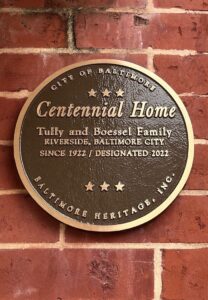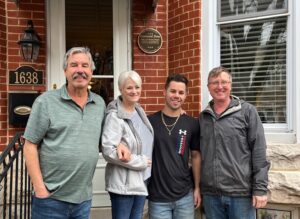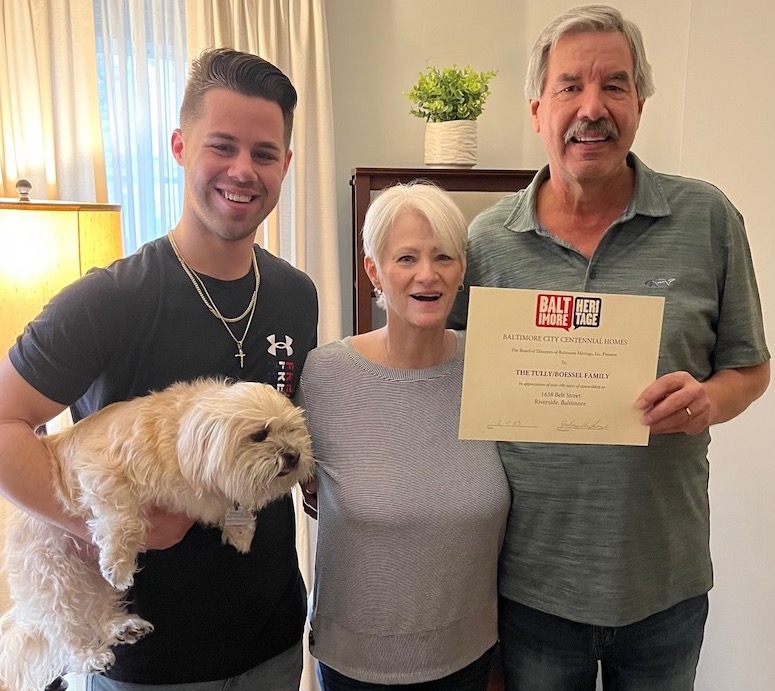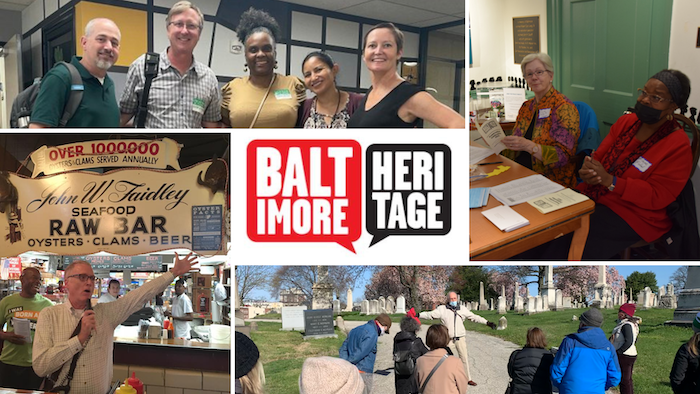Spring is right around the corner and with it comes a host of great heritage tours! We are thrilled to offer tours in historic neighborhoods all over Baltimore.
Historic Rockland Village: A Preserved Hamlet from 1706 – On March 4, Baltimore Heritage and Preservation Alliance of Baltimore County hope you can join us for a tour of Rockland Village, one of the earliest settlements on the Jones Falls River. Thomas Bruggman, a 45-year resident and historic preservationist, will help us travel back in time on a tour of this idyllic hamlet that is still home to an 18th century tavern and blacksmith shop, as well as a livery stable and a grist mill. Situated in Baltimore County right on the city/county line, this tour will showcase the eclectic history of this area from its roots as a buffalo crossing and Susquehannock summer camp to the oldest existing outdoor Art Deco swimming pool in the country.
Sunday Morning Monumental City Tours – The first day of the Sunday Farmers’ Market & Bazaar is Sunday, April 2, and it’s also the first tour in our 2023 Monumental City Sunday morning series! From April through November, we’ll be hosting guided walking tours on Sunday mornings of the 1904 Fire Downtown, Ridgely’s Delight, Federal Hill, and Mount Vernon Place. Come to one or come to all, and bring a friend! Find the list of all of the tours here.
Lexington Market: In October 2022, the new Lexington Market opened in a brand new building. On this tour we’ll first explore the surrounding neighborhood to discover how Baltimore emerged as a leading industrial and economic city in the 19th century. Immigration, slavery, commerce and major changes in transportation were all part of the mix here in Baltimore and the country as a whole. We’ll end with a tour of the new market, including its wonderful public art and, of course, its merchants (new and old). Be sure to bring your canvas bags to do some quintessential Baltimore shopping after the tour! Join us on March 25 & April 22.
Green Mount Cemetery – We are also back again with tours of Green Mount Cemetery. Green Mount is the final resting place of some of Maryland’s most famous, and infamous, figures including Johns Hopkins, Enoch Pratt, William and Henry Walters, Mary Elizabeth Garrett, Betsy Patterson, A.S. Abell, John H. B. Latrobe, John Wilkes Booth, and Elijah Bond, who patented the Ouija Board. We’ve got tours lined up on: March 18, April 15, May 20, & June 17.
Clifton Mansion – Finally, we are introducing a new tour at Clifton Mansion, the unique Italianate country house that has overlooked Baltimore City for over 200 years. At one time the summer home of War of 1812 captain Henry Thompson and then philanthropist Johns Hopkins, the story of Clifton Estate is one about two prominent businessmen, enslaved & free Black people, and more. We’ll also get to see the latest restorations made possible by the Friends of Clifton Mansion and Civic Works, as well as some yet-to-be restored spaces that are brimming with stories to tell! And the tour wouldn’t be complete without climbing the tower and taking in one-of-a-kind views of Clifton Park and our surrounding city. We hope to see you there on March 4, April 15, & May 6.
We will be updating our tour schedule to include more Behind the Scenes tours of places all over city, so please continue to check our website. Find all of our tours and more here!
 The Baltimore Centennial Homes project, developed in collaboration between Baltimore Heritage and City Councilman James Kraft, recognizes families that have been in the same house for 100 years or more. These families have anchored Baltimore’s historic blocks and neighborhoods through good times and bad. Their stories show the changes that our communities and our city have experienced as well as the critical roles that neighborhoods and their families have played in keeping historic neighborhoods thriving.
The Baltimore Centennial Homes project, developed in collaboration between Baltimore Heritage and City Councilman James Kraft, recognizes families that have been in the same house for 100 years or more. These families have anchored Baltimore’s historic blocks and neighborhoods through good times and bad. Their stories show the changes that our communities and our city have experienced as well as the critical roles that neighborhoods and their families have played in keeping historic neighborhoods thriving.






 When
When 
